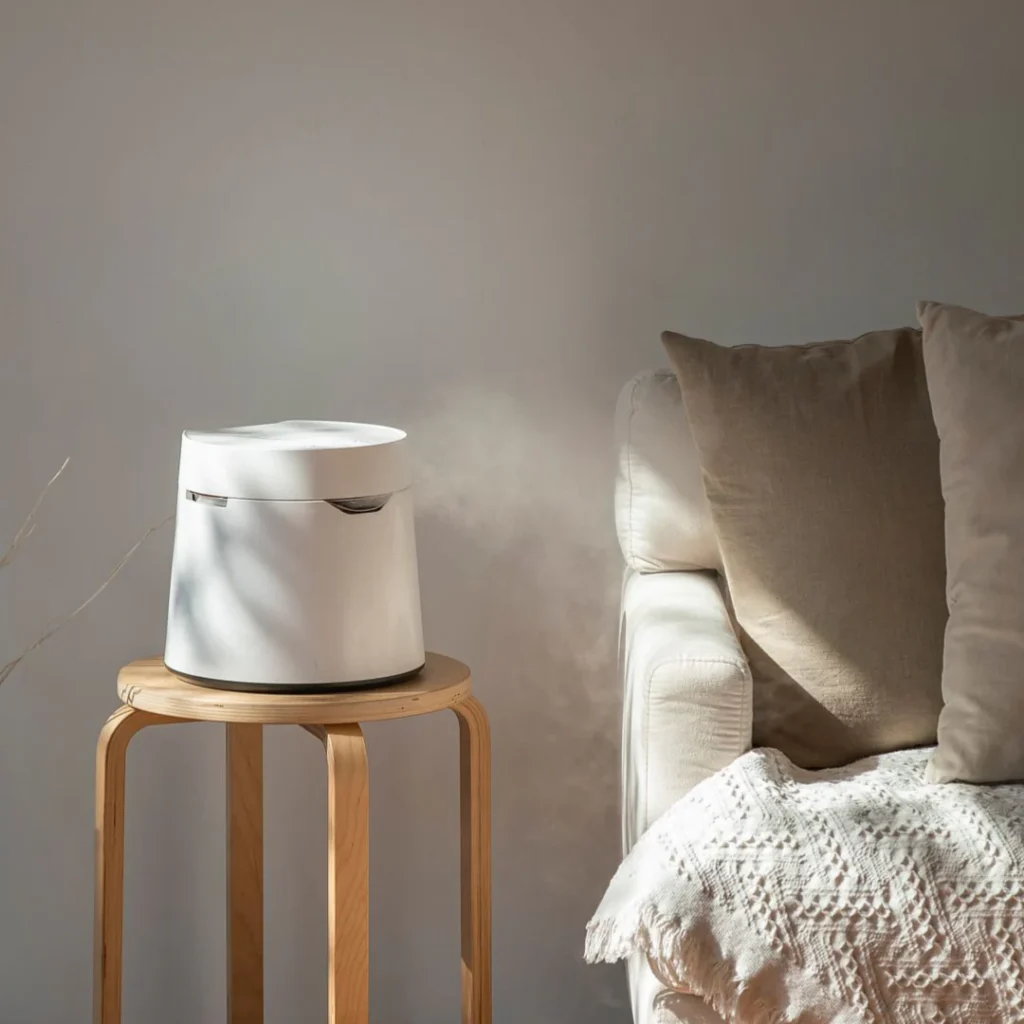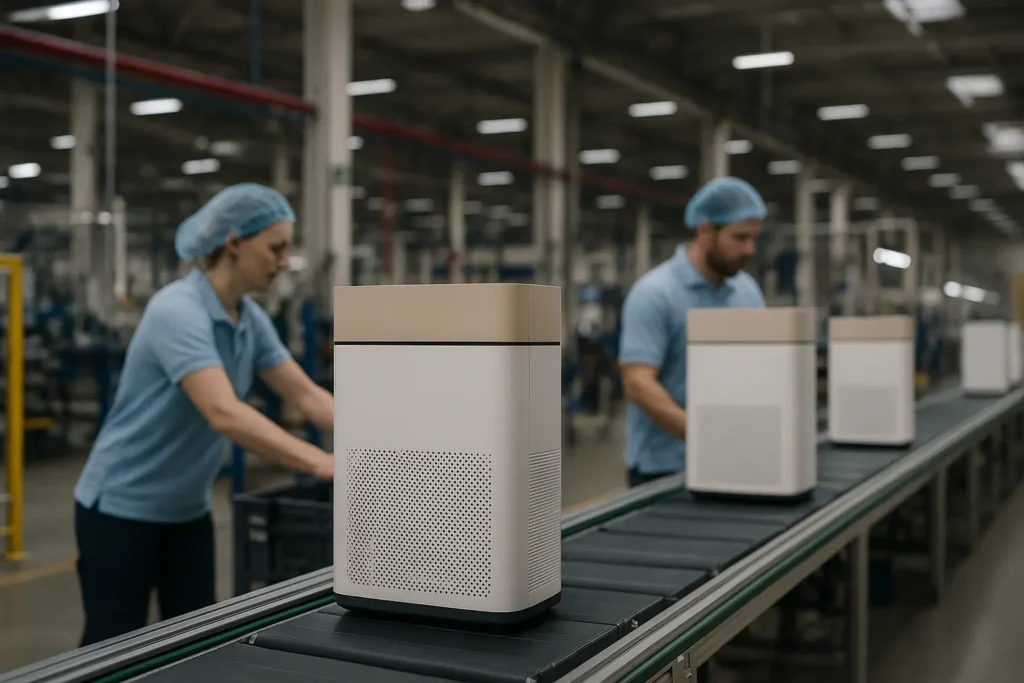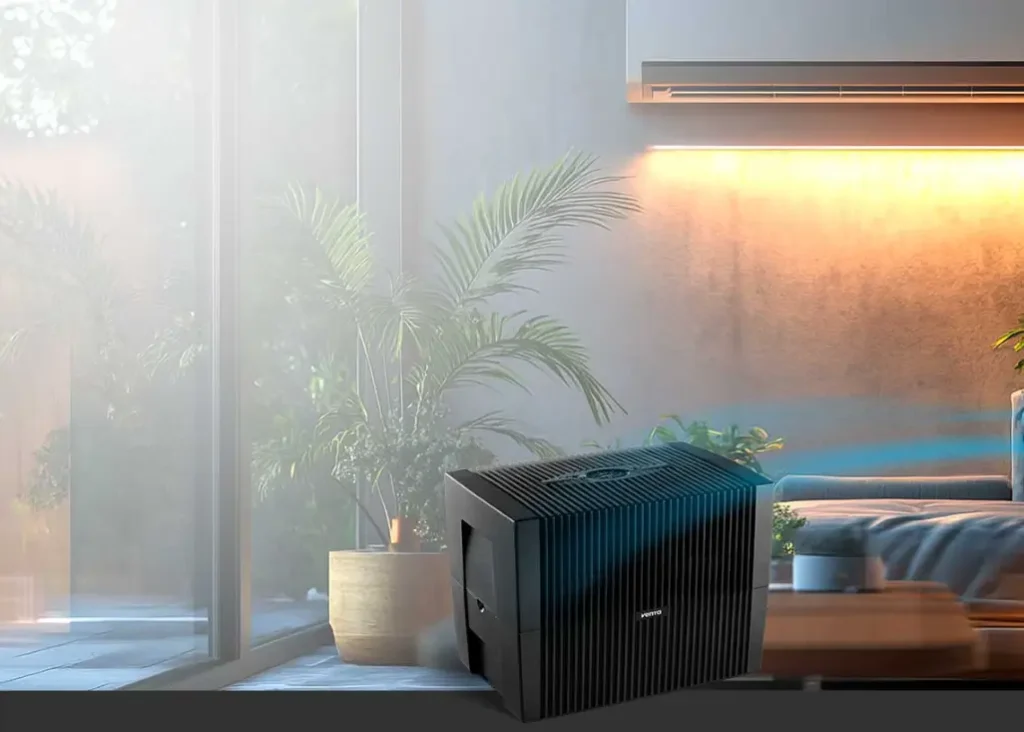Not air filters installed in HVAC appliances and air purifiers have the same quality and build. One way of analyzing these filters is through the use of the MERV rating. Read on and learn more about this system.
While the air is moving and passing through air purifiers and other HVAC systems, they eventually pass different filters. In the context of air purifiers, the filters trap various contaminants present in the air, such as allergens, dust, and pathogens.
But not all air purifiers are the same. Most of the time, they differ in the quality of their filters. This is where you might need to learn what the best MERV rating for homes are and how it helps assess the performance of air filters.
What Are MERV Filter Ratings

Image Source: Unsplash
If you are new to the world of air purifiers, then it is probable that you don't know what a MERV rating is. Specifically, the MERV rating stands for the Minimum Efficiency Reporting Value. It is a designation assigned to filters, not the entire air purifiers.
In a nutshell, the MERV rating for home filters tells you the efficiency of a particular filter in capturing different airborne contaminants passing through them. It is also notable that filters that have higher merv rating are known to excel in trapping small particles.
Hence, it is normal for HEPA filters to have the highest MERV filter rating, considering that they are designed to trap microscopic particles and substances in the air.
FPR, MERV & MPR: What's their Differences
The American Society of Heating, Refrigerating, and Air Conditioning Engineers (ASHRAE) came up with the MERV system. Based on the explanation of ASHRAE, the goal of MERV is to help consumers understand the performance of these filters and find the ideal MERV rating for homes.
However, it is not the only metric system for rating air purifiers. There are still the MPR and FPR.
Air Filter FPR Meaning And Performance
The Filter Performance Rating (FPR) is a measure of how well an air purifier can remove particles from the air. The higher the FPR, the better the purifier will be at removing particles, with a scaling of 4 to 10. The FPR is based on the size of the particles that the purifier can remove, with the smallest particles being the most difficult to remove. This measurement is made by Home Depot.
Difference Between FPR And MERV
| FPR Rating for Filters | MERV Rating Equivalent | Pollutant Types |
| 4 | MERV 8 - 10 | Dust, lint, dust mites, and mold |
| 5 | ||
| 6 | MERV 11 - 12 | Dust, lint, dust mites, mold, pet dander, smoke, and smog |
| 7 | ||
| 8 | MERV 13 - 16 | Dust, lint, dust mites, mold, pet dander, smoke, and smog, bacteria, and viruses |
| 9 | ||
| 10 |
Best FPR Air Filter Brand
There aren’t many air filter brands tested under the FPR rating. However, air purifiers sold in Home Depot have air filters that are FPR-tested. One of these air filter brands is Honeywell.
MPR
A microparticle performance rating (MPR) is a way to rate the ability of an air filter to remove small particles from the air that are smaller than 1 micron. It is a rating made by 3M. The higher the MPR, the better the filter is at removing particles. The MPR system only rates the ability of filters to remove 0.3 microns to 1 micron particles.
Difference Between FPR And MERV
| MPR Ratings for Filters | MERV Rating Equivalent | Pollutant types |
| 300 | MERV 6 - 7 | Dust and lint |
| 600 | MERV 8 - 10 | Dust, lint, dust mites, and mold |
| 800 | ||
| 1000 | MERV 11 - 12 | Dust, lint, dust mites, mold, pet dander, smoke, and smog |
| 1200 | ||
| 1500 | MERV 13 - 16 | Dust, lint, dust mites, mold, pet dander, smoke, and smog, bacteria, and viruses |
| 1900 |
Best FPR Air Filter Brand
The FPR rating for air filters is important, similar to MERV. It tells how good an air filter is in removing airborne particles. Hence, some air purifier brands have filters that are certified under this metric. Among them is the air purifier brand Filtrete.
MERV
As mentioned, MERV stands for Minimum Efficiency Reporting Value. Specifically, it measures the ability of the filter to trap particles and substances whose size ranges from 0.3 microns to 10 microns.
It is the American Society of Heating, Refrigerating, and Air Conditioning Engineers (ASHRAE) that came up with this measurement. Based on the explanation of ASHRAE, the goal of MERV is to help consumers understand the performance of these filters and find the ideal MERV rating for homes.
MERV Rating for Filters: Why Is It Important?

Image Source: Unsplash
Why is it essential to talk about MERV rating? Well, the reason as follows:
COVID-19
Filters with high MERV are effective in capturing the virus that causes this potentially lethal disease. Your air purifier should have a filter that has a medical-grade rating to reduce the possibility of COVID-19 transmission indoors.
According to ASHRAE, filters with a MERV rating of 13 are suitable for COVID-19. However, it would be better if you could get filters with a rating of MERV 14 or higher to ensure that your indoor air is safe from COVID-19.
Wildfires
If you are residing in a wildfire-prone area, you have to prioritize air cleaning systems that score high in the MERV rating. Wildfires are quite dangerous, even if you are not in the line of the blaze. The smoke they generate carries toxic particles that could affect your health.
Energy Efficiency
Air filters that score high in the MERV rating are capable of reducing the presence of various airborne contaminants--regardless of how small they are. If you have these filters in your air purifier, external ventilation may no longer be needed.
If you no longer have the need to open your doors and windows, it will result in better energy consumption. After all, you will no longer have to rely excessively on cooling, heating, and other HVAC systems. Of course, energy-saving is one of the perks of getting a powerful air purifier.
MERV Rating Chart
Always remember that the biggest number doesn't mean the best solution for your indoor air problems. For instance, if you use an air filter with a higher MERV rating than what is recommended, it could actually reduce the air purifier's performance.
At this point, it is already essential that you get to see an authentic MERV rating chart. You can use the latter as a reference in understanding air filters and their appropriate usage.
| Standard 5.2 Minimum Efficiency Reporting Value | Dust Spot Efficiency | Average Arrestance | Commonly Controlled Contaminants | Common Uses And Applications | Type of Filter | Specific Ratings and Uses |
| 20
19 18 17 |
N/A
N/A N/A N/A |
N/A
N/A N/A N/A |
<0.30 micron particles
Unattached virus Carbon dust All types of combustion smoke |
Radioactive materials
Pharmaceuticals Carcinogenic materials Cleanrooms |
HEPA filter ≥99.999% efficiency for .10 - .20-micron particles
HEPA filter ≥99.97% efficiency on .30-micron particles |
Best MERV rating for home: MERV 8 - 13
Best MERV rating for residential: MERV 8 - 10
Best MERV rating for wildfire smoke: MERV 13 - 20
Best MERV rating for allergies: MERV 16 - 20
Best MERV rating for air flow: MERV 13 - 20
Best MERV rating for pet dander: MERV 11 - 16
Best MERV rating for wood dust: MERV 11 -16
Best MERV rating for mold spores: MERV 17 - 20
Best MERV rating for home furnace: MERV 6 - 8
Best MERV rating for AC filter: Depends on the compatibility
Best MERV rating for drywall dust: MERV 12 - 16
Best MERV rating for pollen: MERV 16 - 20 |
| 16
15 14 13 |
N/A
>95% 90-95% 89-90% |
N/A
N/A >98% >98% |
.30-1.0 micron particles
Bacteria Tobacco smoke Droplet nuclei |
Commercial buildings
Surgery rooms Hospital inpatient rooms Smoking areas and lounges |
Bag filter
Box filter |
|
| 12
11 10 9 |
70-75%
60-65% 50-55% 40-45% |
>95%
>95% >95% >90% |
1.0-3.0 micron particles
Lead dust, humidifier dust Auto emissions, fumes, flour Wildfire smoke |
Residential buildings
Commercial buildings Hospital laboratories |
Bag filter
Box filter |
|
| 8
7 6 5 |
30-35%
25-30% <20% <20% |
>90%
>90% 85-90% 85-90% |
3.0-10.0 micron particles
Mold spores, hair spray Fabric protector, cement dust Pudding mix |
Commercial buildings
Residential buildings Industrial spaces |
Pleated filters
Cartridge filters Throwaway filters |
|
| 4
3 2 1 |
<20%
<20% <20% <20% |
75-80%
70-75% 65-70% <65% |
>10.0 micron particles
Pollen Dust mites Spray paint dust, sanding dust Fibers from carpets and textiles |
Areas that require minimal air filtration
Residential Window-type ACs |
Cartridge
Throwaway Electrostatic |
MERV Rating Scale
Understanding the MERV ratings is important. It lets you know which air filters are suitable for your existing needs and demands. Since air purification is a vital aspect of various indoor settings, it is essential that you know the technicalities of filtration.
Fortunately, it is not difficult to understand the rating. After all, they have been designed for consumers to be able to analyze and compare different air filters presented to them.
Below are the specific guidelines for understanding the MERV rating scale.
1-4 MERV Ratings
- In this category, the filters are commonly used for pre-filters, window air conditioners, and residential furnaces.
- They are capable of removing large pollen, carpet and textile fibers, sawdust, and dust mites.
- The actual capability of the filters is to trap particles and contaminants that are as small as 10 microns.
- By the way, this rating isn't the best choice for allergy and asthma sufferers. The filters don't trap the common allergy-causing substances.
5-8 MERV Ratings
- Within this scale, the filters are being used for industrial buildings, residential and commercial structures, and paint booths.
- As long as you have this air filter in your HVAC systems and air purifiers, you will be able to mitigate sawdust, carpet fibers, pollen, dust mites, building dust, lint, and mold spores.
- Based on various references, the MERV 5-8 filters are capable of capturing substances and particulate matter that are as small as 3 to 10 microns.
- You may need to spend a little with these filters.
9-12 MERV Ratings
- When the filter is rated within the 9-12 MERV scale, it means that it is suitable for residential and commercial buildings that require beyond conventional air filtration. Hospitals and laboratories are among them. Your home may also require these filters during wildfire season.
- Air filters with this rating are capable of mitigating the presence of fibers, household dust, legionella, lead dust, humidifier dust, dust mites, sawdust, and pollen.
- They can filter 1 to 3-micron particles.
- Keep in mind that these filters are slightly more expensive than filters with a lower MERV rating.
13-16 MERV Ratings
- If you are looking for superior filtration for residential and commercial buildings, it is essential that you get filters that fall within this category. Filters within this MERV scale are usually used in in-patient care facilities, surgery rooms, and hospitals. Technically, they are suitable for capturing microscopic pollutants.
- Basically, these filters are able to capture all the contaminants that filters within MERV 1-12 can remove.
- But at the same time, they are also suitable for removing pathogens, car emissions, sneezing particles, tobacco and cigarette smoke, fumes, cosmetic residues, and pet dander.
- Most HEPA filters fall in this category. They can capture 0.3 to 1 microns of particles and substances in the air.
17-20 MERV Ratings
- These filters are used in facilities that have pharmaceuticals, carcinogenic and radioactive residues, and surgery rooms.
- They can capture all the particles, substances, and pollutants that MERV 1-16 filters can remove. But at the same time, they can also remove viruses, radon, microscopic allergens, carbon dust, and combustion residues.
- These filters are capable of removing particles smaller than 0.3 microns.
MERV Efficiency Chart
| Air Filters | MERV 7 filter | MERV 8 filter | MERV 11 filter | MERV 13 filter | MERV 15 filter | MERV 16 filter | MERV 17 HEPA filter | MERV 18 HEPA filter | MERV 19 HEPA filter | MERV 20 HEPA filter |
| 0.3-1.0 microns | Under 20% | Under 20% | Under 20% | Under 75% | 85% - 94% | Above 95% | 99.97% | 99.997% | 99.9997% | 99.99997% |
| 1.0-3.0 microns | Under 20% | Under 20% | 65% - 79% | Above 90% | Above 95% | Above 95% | 99.99% | 99.99% | 99.99% | 99.99% |
| 3.0-10 microns | 50% - 69% | 70% - 85% | Above 85% | Above 90% | Above 90% | Above 90% | 99.99% | 99.99% | 99.99% | 99.99% |
The table above shows the efficiency of various MERV filter ratings in removing particles of different sizes. As you can see, MERV ratings 16 - 20 provide the highest filtration capabilities. They are essentially HEPA filters, so they can capture 99.9 percent of airborne contaminants that are as small as 0.1 microns. They are great for homes and spaces that face constant threats against allergens and pathogens.
Best MERV Rating

Image Source: Unsplash
The following sections explain the ideal MERV rating for specific applications and needs.
Best MERV Rating for Home
For your home, this means that you need to get filters with a MERV rating of 8 - 13. Specifically, these are already high-end filters that are designed for residential and commercial applications.
Best MERV Rating for Wildfire Smoke
So what is the ideal MERV rating for wildfire smoke? Based on research, a MERV rating of 9 - 12 is already the baseline for absorbing the threats of wildfire smoke. But if you want foolproof performance, it is recommended that you go with air filters that have a 13 - 20 MERV rating.
Best MERV Rating for Allergies
The ideal filter for allergy sufferers should be capable of removing up to 0.3-micron contaminants or smaller. The thing is, most of the common allergens are within this scale. We recommend that you get MERV 17-20 air filters here. While MERV 13-16 filters should work fine, you may want an extra degree of protection in your indoor space.
Best MERV Rating for Airflow
If you want your space to have an optimized airflow (without the threat of any airborne pollutants), then you should get air filters that have a MERV 13 - 20 rating. Within this range, the air filters would be able to capture different pollutants in the air.
Best MERV Rating for Pet Dander
For pet danders, it would be best that your air purifier has filters that have a MERV 11 - 16 rating. Of course, you are free to pick HEPA filters if you want to ensure that you won’t inhale airborne pet residues.
Best MERV Rating for Wood Dust
Wood dust can either come in the form of large debris or fine dust. If it is the former, then a MERV rating of 5 - 8 is already enough. But for fine dust, you need air filters that are within the MERV 11 - 16 rating.
Best MERV Rating for Mold Spores
Mold spores are microscopic allergens. Hence, only HEPA filters are effective against them. Here, air filters within the 17 - 20 range are the most effective in capturing mold spores.
Best MERV Rating for Home Furnace
For home furnaces, air filters that have a MERV rating of 6 - 8 are already acceptable. But if you are worried about fine dust, then you should go with air purifiers that have HEPA filters.
Best MERV Rating for AC Filter
You need to check the compatibility of your AC system before deciding what type of air filter to install. The higher the MERV rating, the thicker the filter is. If the filter is thick, then it might not fit into your appliance.
Best MERV Rating for Pollen
Similar to mold spores, pollen is almost microscopic in size. Hence, it is recommended that you get air filters that have a MERV rating of 17 - 20. Basically, these are HEPA filters.
Best MERV Rating for Drywall Dust
You can get air filters that have a MERV rating of 13 - 16 so that you can deal with drywall dust. They should be enough to keep these harmful residues away from your respiratory system.
Best MERV Rating for Residential Spaces
It depends on the type of pollutant that you are dealing with. Normally, a MERV rating of 8 - 13 should be enough. But if you want to be free from allergens and pathogens, you should get air filters for home with a MERV rating of 17 - 20.
HEPA Filter MERV Rating
Essentially, HEPA filters belong to the higher scale of the MERV rating. Specifically, they are within the MERV 17 - 20 scale. They are the ones that can capture at least 99.9 percent of microscopic contaminants with sizes as small as 0.3 microns. They are efficient in capturing pollutants like pathogens and allergens.
Best HEPA Air Purifier MERV Rating
Any air filters, regardless of their brand, that are within the MERV rating of 17 - 20 are already accepted as HEPA filters. If you can get an air filter with a MERV rating of 20, that’s good. It means that the air purifier can remove harmful respiratory threats in the air.
Dyson Air Purifier MERV Rating
Dyson is a famous brand of home cleaners, such as vacuums. At the same time, it is also a reputable maker of HEPA air purifiers. The rating of its air filters is within the 17 - 20 scale, so you can trust Dyson air purifiers are effective in removing various airborne contaminants.
Honeywell HPA300 MERV Rating
The Honeywell HPA300 is a remarkable air purifier. It is equipped with a certified Honeywell HEPA filter that is capable of capturing microscopic airborne particles, such as allergens, pathogens, and fine dust.
GermGuardian MERV Rating
GermGuardian manufactures high-quality air purifiers for residential spaces. The HEPA filters on these air purifiers are at least MERV 17 rating. That proves that they are equally capable as other air filter brands.
Top Rated Air Purifiers With HEPA Rating
The following are other sets of air purifier brands that utilize high-quality HEPA filters on their products.
Mooka Air Purifiers
Mooka specializes in the construction of residential air purifiers. Notably, many of its air purifiers are suitable for medium to large spaces. As expected, these air purifiers have great HEPA filters; each of these filters has at least a MERV 17 rating.
Colzer Air Purifiers
Colzer offers an extensive selection of HEPA air purifiers. Regardless of your indoor air purification needs, Colzer air purifiers can match them. According to their specifications, the average HEPA filter of Colzer has a MERV rating of 18.
Bionaire Air Purifiers
Bionaire features the use of True HEPA filters on its air purifiers--aside from the inclusion of UV lights. Its HEPA filters have a rating of at least 18, so it is no longer surprising why its air purifiers are efficient in removing microscopic pollutants.
Where Are These Branded Air Purifiers Manufactured
Air purifier manufacturers tend to construct their products in their respective facilities. However, there’s a prevailing number that opts to outsource the manufacturing of their air purifiers somewhere else.
Specifically, they prefer countries like China because of its high-quality output and affordable labor and manufacturing costs. HisoAir is among the third-party suppliers of these branded HEPA air purifiers.
What MERV Rating Should I Buy?
When it comes to MERV rating, there's no such thing as one-size-fits-all. Your air filtration needs might be different from other users, and that's pretty normal. Residential spaces in a suburban or rural area may not need extensive air filtration as those located in urban settings.
Carrier Recommended MERV Rating
Carrier indicated that the ideal MERV rating for residential spaces would be 7 - 8. For areas that have special needs, they should consider aiming for air purifiers that have MERV 12 - 16 filters. But of course, the brand said that HEPA filters still offer the best air cleaning results.
Lennox Recommended MERV Rating
Meanwhile, Lennox suggested that the best way to clean the indoor air of your office or home is through the use of high-quality air purifiers. Specifically, Lennox said that consumers should look for air cleaners equipped with filters that have a MERV rating of at least 10.
Trane Recommended MERV Rating
According to Trane, it is still essential that you check the compatibility of your HVAC systems or air purifiers when it comes to choosing the ideal MERV rating. Compatibility is always an issue for these filters, so it would be better if you check what filters work for your air cleaners.
Goodman Recommended MERV Rating
Goodman mentioned that air filters with a MERV rating of 7 - 13 are already sufficient for common house use. However, this AC company said that it is essential to check if your HVAC system or air cleaners are suitable for the filters that you want to get.
CDC Recommended MERV Rating
The Centers for Disease Control and Prevention always emphasize the importance of the efficiency of air purifiers. Therefore, it is not surprising that this agency recommends the use of air filters with a high MERV rating. The higher the rating, the better the protection you receive against pathogens, such as viruses.
Best MERV Rating For Different Microparticle Type
The following sections set the ideal MERV ratings for specific microparticles. It is essential that you can get this correct so that you will be able to find the ideal air filter for problematic airborne pollutants, such as allergen and pathogens.
For Pollen
Pollen belongs to the MPR 1000 - 1,200 microparticle classification. But some pollen is large enough to be within the MPR 300 - 600 rating. Hence, the ideal air filter here would be those that have a MERV rating of 9 - 12. But to be sure, pick air filters that have a MERV rating of 17 - 20.
For Smoke
Similar to pollen, cigarette/tobacco smoke belongs to the MPR 1,000 - 1,200 rating. Hence, it is a given that filters with a MERV rating of 11 - 12 are capable of smoke-related particles. Air filters with a MERV rating of 13 and higher can easily deal with smoke.
For Dust
Dust can be captured by filters with a MERV rating of at least 6. It is equivalent to the MPR 300 - 500 classification. But of course, you have to consider that some dust is already microscopic. Therefore, there's nothing wrong with using air filters that have a MERV rating of 16 or higher.
For Wildfire Smoke
High-efficiency filters (MERV 9 - 12) are capable of absorbing the dangerous particles within wildfire smoke, according to the Environmental Protection Agency. Meanwhile, True HEPA filters (MERV 17 and higher) can remove as much as 99.9 percent of these pollutants.
For Mold Spores
Mold spores belong to at least MPR 600. But some mold spores are rated as high as 1,900 in the MPR classification. Hence, you should aim for true high-efficiency filters here or those that are within the MERV 17 - 20 rating.
Conclusion
It is evident that the quality of air filters is essential to the overall performance of HVAC and air cleaning systems. Through the use of the air filter MERV rating, you will be able to assess if a particular filter is suitable for your needs and requirements.
When it comes to indoor air purification, powerful and energy-efficient air purifiers are always the best pick. These air purifiers have been fitted with filters that are capable of trapping microscopic contaminants in the air. HisoAir air purifiers are among the finest options for these impeccable filters.
Visit HisoAir and check our provisions.
Check other informative blogs on our site!
- Getting Rid of Weed Smell: 5 Proven Ways to Try
- How To Remove Dust After Building Work: 5 Easy Removal Strategies
- How to Get Rid of Allergy Headaches: 5 Effective Treatments







